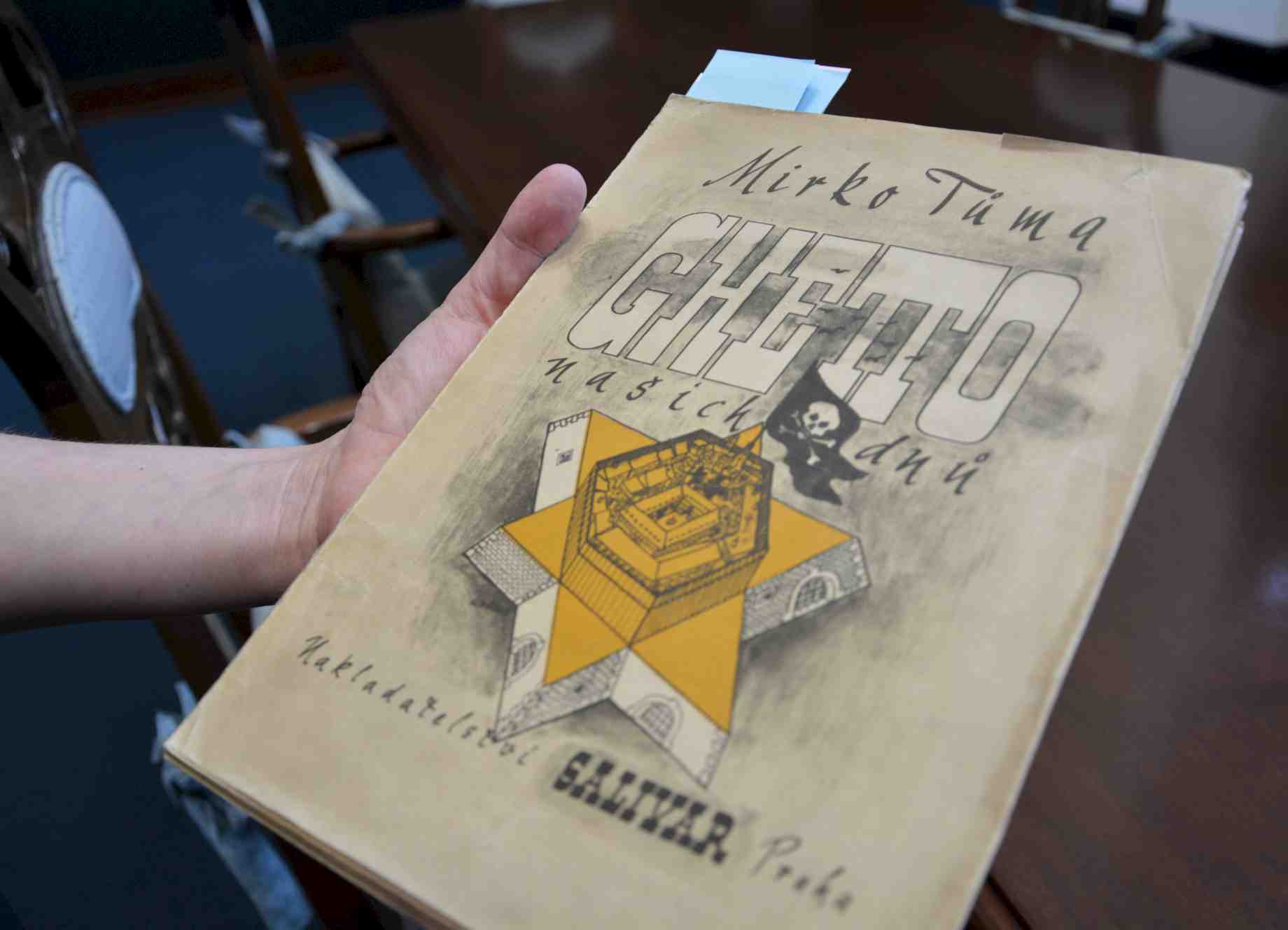Four rare books will be on display at the Phillips Center on Saturday, April 18, 2015 in conjunction with the College of the Arts' Protest Requiem concert, which features the UF Choral Union and UF Symphony Orchestra performing Verdi's Requiem. Dr. Rebecca Jefferson, head of the Price Library of Judaica, chose these particular volumes by virtue of their relation to Theresienstadt, the Nazi ghetto that was presented to the Red Cross as a model camp during World War II. This camp was full of Jewish artists, musicians and writers, in addition to other Jewish citizens, and was where the prisoners performed Verdi’s Requiem. This is the story behind Protest Requiem.
“The musicians in the camp chose to perform various concerts to sustain their courage and hope, and Verdi’s Requiem was one of them,” says Jefferson. “That one is particularly poignant because, I believe, they performed it 16 times, and after the 16th performance many were shipped off to Auschwitz.”
Prior to Protest Requiem is a week of educational programming. “This has all come as a result of one man’s vision—Dr. Will Kesling,” says Jefferson. “He has conducted the Requiem before, but never in this context.”
A committee was formed to help support the performance and arrange for additional activities. Jefferson was asked what materials were in the Judaica Library that would provide context to the story and chose four from the library's collection.
“We have a lot of wonderful books, but I did make one particular purchase of a rare book, and I’m so glad I did because it has added to our already rich collection,” says Jefferson. “The new book is from 1945 and is an eyewitness account of life in Theresienstadt by a Czech poet named Mirko Tuma.”
Fortunately, Tuma survived the Holocaust and came to the U.S. where he became a teacher. He published an account in English of the Requiem concert and explains how this was an act of defiance for the prisoners.
The book also features illustrations by Leo Hass, a well-known Czechoslovakian painter, and other painters in the camp. These individuals got together to record what the ghetto was really like.
“The Nazis provided materials for the artwork and all they cared about was creating this facade,” says Jefferson. “They didn’t pay attention to what the prisoners were actually doing so the prisoners were able to create pictures like this and get them smuggled out. This really showed what was going on.”
Books such as this one were composed within the ghetto and then published after liberation, so they are rare and difficult to obtain.
“Displaying rare books, particularly at UF, shows the resources we have for our students,” says Jefferson, noting that the library has one of the largest and best collections in the southeastern United States. “Students are lucky that we have this wonderful Judaica collection.”
Jefferson also credits the week of activities to the power of many groups coming together: the College of the Arts, Price Library of Judaica, Center for Jewish Studies, History Department, Gainesville Civic Chorus, UF Hillel, Gainesville Chapter of Hadassah and the Jewish Council of North Central Florida.
“We’ve all come together to present these wonderful, varied and complementary events," says Jefferson. "The scope of this project shows what you can do together as a group.”




